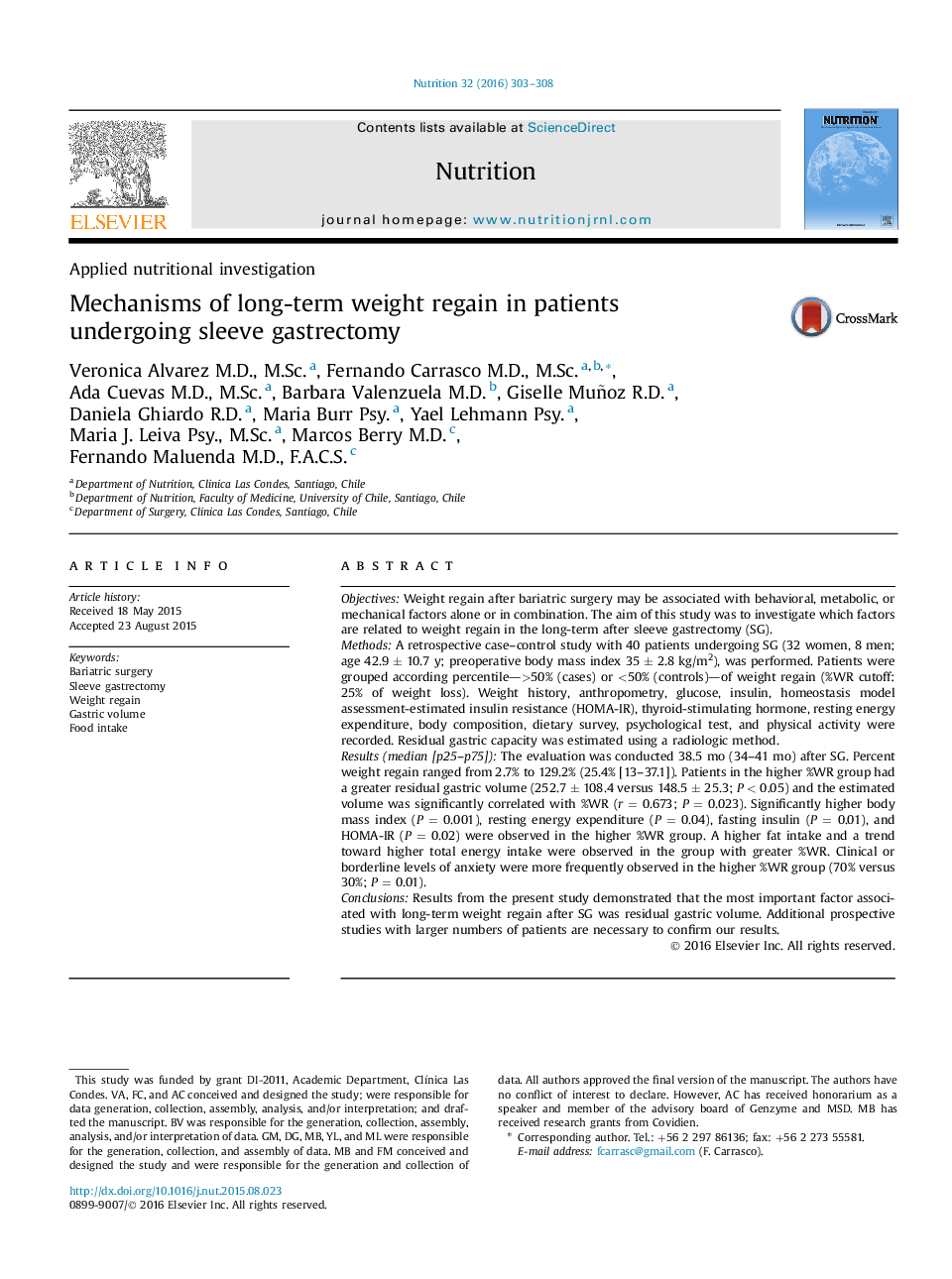| کد مقاله | کد نشریه | سال انتشار | مقاله انگلیسی | نسخه تمام متن |
|---|---|---|---|---|
| 3276161 | 1208532 | 2016 | 6 صفحه PDF | دانلود رایگان |
• Long-term weight regain after sleeve gastrectomy has been estimated to occur in 13% to 30% of patients.
• In this study, the range of weight regain was very wide, varying from 2.7% to 129.2%.
• Patients in the group with higher percentage of weight regain had a greater residual gastric volume, and the estimated volume was significantly correlated with percent weight regain.
• An absolute higher fat intake and a trend toward higher total energy intake were observed in the group with greater percent weight regain.
• Clinical or borderline levels of anxiety were more frequently observed in the group with the higher weight regain (70%) than in the group with the lower percentage of weight regain (30%).
ObjectivesWeight regain after bariatric surgery may be associated with behavioral, metabolic, or mechanical factors alone or in combination. The aim of this study was to investigate which factors are related to weight regain in the long-term after sleeve gastrectomy (SG).MethodsA retrospective case–control study with 40 patients undergoing SG (32 women, 8 men; age 42.9 ± 10.7 y; preoperative body mass index 35 ± 2.8 kg/m2), was performed. Patients were grouped according percentile—>50% (cases) or <50% (controls)—of weight regain (%WR cutoff: 25% of weight loss). Weight history, anthropometry, glucose, insulin, homeostasis model assessment-estimated insulin resistance (HOMA-IR), thyroid-stimulating hormone, resting energy expenditure, body composition, dietary survey, psychological test, and physical activity were recorded. Residual gastric capacity was estimated using a radiologic method.Results (median [p25–p75])The evaluation was conducted 38.5 mo (34–41 mo) after SG. Percent weight regain ranged from 2.7% to 129.2% (25.4% [13–37.1]). Patients in the higher %WR group had a greater residual gastric volume (252.7 ± 108.4 versus 148.5 ± 25.3; P < 0.05) and the estimated volume was significantly correlated with %WR (r = 0.673; P = 0.023). Significantly higher body mass index (P = 0.001), resting energy expenditure (P = 0.04), fasting insulin (P = 0.01), and HOMA-IR (P = 0.02) were observed in the higher %WR group. A higher fat intake and a trend toward higher total energy intake were observed in the group with greater %WR. Clinical or borderline levels of anxiety were more frequently observed in the higher %WR group (70% versus 30%; P = 0.01).ConclusionsResults from the present study demonstrated that the most important factor associated with long-term weight regain after SG was residual gastric volume. Additional prospective studies with larger numbers of patients are necessary to confirm our results.
Journal: Nutrition - Volume 32, Issue 3, March 2016, Pages 303–308
